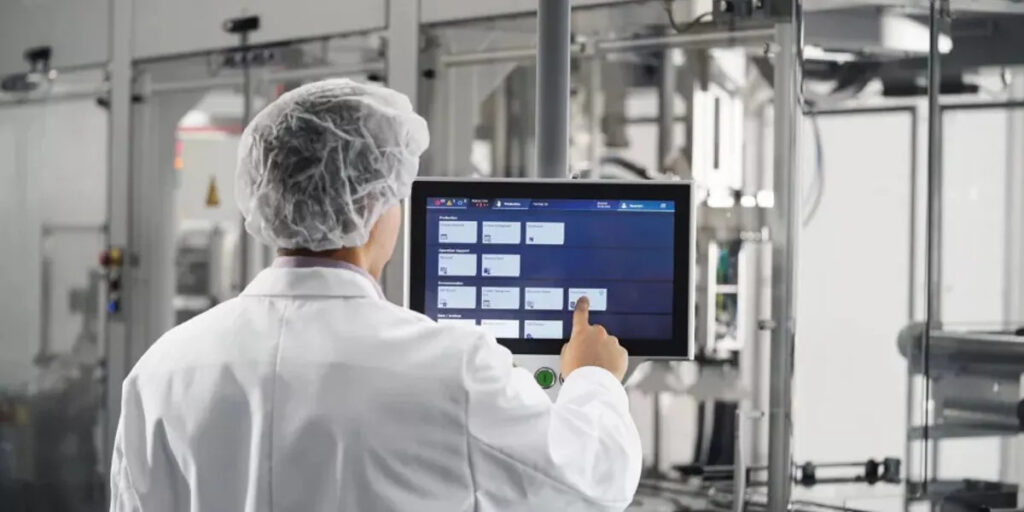Report Introduction
The advent of Artificial Intelligence (AI) over recent years has truly revolutionized our industries and personal lives, offering unprecedented opportunities and capabilities. However, while cloud-based processing and cloud AI took off in the past decade, we have come to experience issues such as latency, bandwidth constraints, and security and privacy concerns, to name a few. That is where the emergence of Edge AI became extremely valuable and transformed the AI landscape.
Edge AI represents a paradigm shift in AI deployment, bringing computational power closer to the data source. It allows for on-device data processing and enables real-time, context-aware decision-making. Instead of relying on cloud-based processing, Edge AI utilizes edge devices such as sensors, cameras, smartphones, and other compact devices to perform AI computations on the device itself. Such an approach offers multitudes of advantages, including reduced latency, improved bandwidth efficiency, enhanced data privacy, and increased reliability in scenarios with limited or intermittent connectivity.
“Even with ubiquitous 5G, connectivity to the cloud isn’t guaranteed, and bandwidth isn’t assured in every case. The move to AIoT increasingly needs that intelligence and computational power at the edge.”
– Nandan Nayampally, CMO, Brainchip
While Cloud AI predominantly performs data processing and analysis in remote servers, Edge AI focuses on enabling AI capabilities directly on the devices. The key distinction here lies in the processing location and the nature of the data being processed. Cloud AI is suitable for processing-intensive applications that can tolerate latency, while Edge AI excels in time-sensitive scenarios where real-time processing is essential. By deploying AI models directly on edge devices, Edge AI minimizes the reliance on cloud connectivity, enabling localized decision-making and response.
The Edge encompasses the entire spectrum from data centers to IoT endpoints. This includes the data center edge, network edge, embedded edge, and on-prem edge, each with its own use cases. The compute requirements essentially determine where a particular application falls on the spectrum, ranging from data-center edge solutions to small sensors embedded in devices like automobile tires. Vibration-related applications would be positioned towards one end of the spectrum, often implemented on microcontrollers, while more complex video analysis tasks might be closer to the other end, sometimes on more powerful microprocessors.
“Applications are gradually moving towards the edge as these edge platforms enhance their compute power.”
– Ian Bratt, Fellow and Senior Director of Technology, Arm
When it comes to Edge AI, the focus is primarily on sensing systems. This includes camera-based systems, audio sensors, and applications like traffic monitoring in smart cities. Edge AI essentially functions as an extensive sensory system, continuously monitoring and interpreting events in the world. In an integrated-technology approach, the collected information can then be sent to the cloud for further processing.
Edge AI shines in applications where rapid decision-making and immediate response to time-sensitive data are required. For instance, in autonomous driving, Edge AI empowers vehicles to process sensor data onboard and make split-second decisions to ensure safe navigation. Similarly, in healthcare, Edge AI enables real-time patient monitoring, detecting anomalies, and facilitating immediate interventions. The ability to process and analyze data locally empowers healthcare professionals to deliver timely and life-saving interventions.
Edge AI application areas can be distinguished based on specific requirements such as power sensitivity, size limitations, weight constraints, and heat dissipation. Power sensitivity is a crucial consideration, as edge devices are often low-power devices used in smartphones, wearables, or Internet of Things (IoT) systems. AI models deployed on these devices must be optimized for efficient power consumption to preserve battery life and prolong operational duration.
Size limitations and weight constraints also play quite a significant role in distinguishing Edge AI application areas. Edge devices are typically compact and portable, making it essential for AI models to be lightweight and space-efficient. This consideration is particularly relevant upon integrating edge devices into drones, robotics, or wearable devices, where size and weight directly impact performance and usability.
Nevertheless, edge computing presents significant advantages that weren’t achievable beforehand. Owning the data, for instance, provides a high level of security, as there is no need for the data to be sent to the cloud, thus mitigating the increasing cybersecurity risks. Edge computing also reduces latency and power usage due to less communication back and forth with the cloud, which is particularly important for constrained devices running on low power. And the advantages don’t stop there, as we are seeing more and more interesting developments in real-time performance and decision-making, improved privacy control, and on-device learning, enabling intelligent devices to operate autonomously and adaptively without relying on constant cloud interaction.
“The recent surge in AI has been fueled by a harmonious interplay between cutting-edge algorithms and advanced hardware. As we move forward, the symbiosis of these two elements will become even more crucial, particularly for Edge AI.”
– Dr. Bram Verhoef, Head of Machine Learning at Axelera AI
Edge AI holds immense significance in the current and future technology landscape. With decentralized AI processing, improved responsiveness, enhanced privacy and security, cost-efficiency, scalability, and distributed computing, Edge AI is revolutionizing our world as we speak. And with the rapid developments happening constantly, it may be difficult to follow all the new advancements in the field.
That is why Wevolver has collaborated with several industry experts, researchers, professors, and leading companies to create a comprehensive report on the current state of Edge AI, exploring its history, cutting-edge applications, and future developments. This report will provide you with practical and technical knowledge to help you understand and navigate the evolving landscape of Edge AI.
This report would not have been possible without the esteemed contributions and sponsorship of Alif Semiconductor, Arduino, Arm, Axelera AI, BrainChip, Edge Impulse, GreenWaves Technologies, Sparkfun, ST, and Synaptics. Their commitment to objectively sharing knowledge and insights to help inspire innovation and technological evolution aligns perfectly with what Wevolver does and the impact it aims to achieve.
As the world becomes increasingly connected and data-driven, Edge AI is emerging as a vital technology at the core of this transformation, and we hope this comprehensive report provides all the knowledge and inspiration you need to participate in this technological journey.
Samir Jaber
Editor-in-Chief





